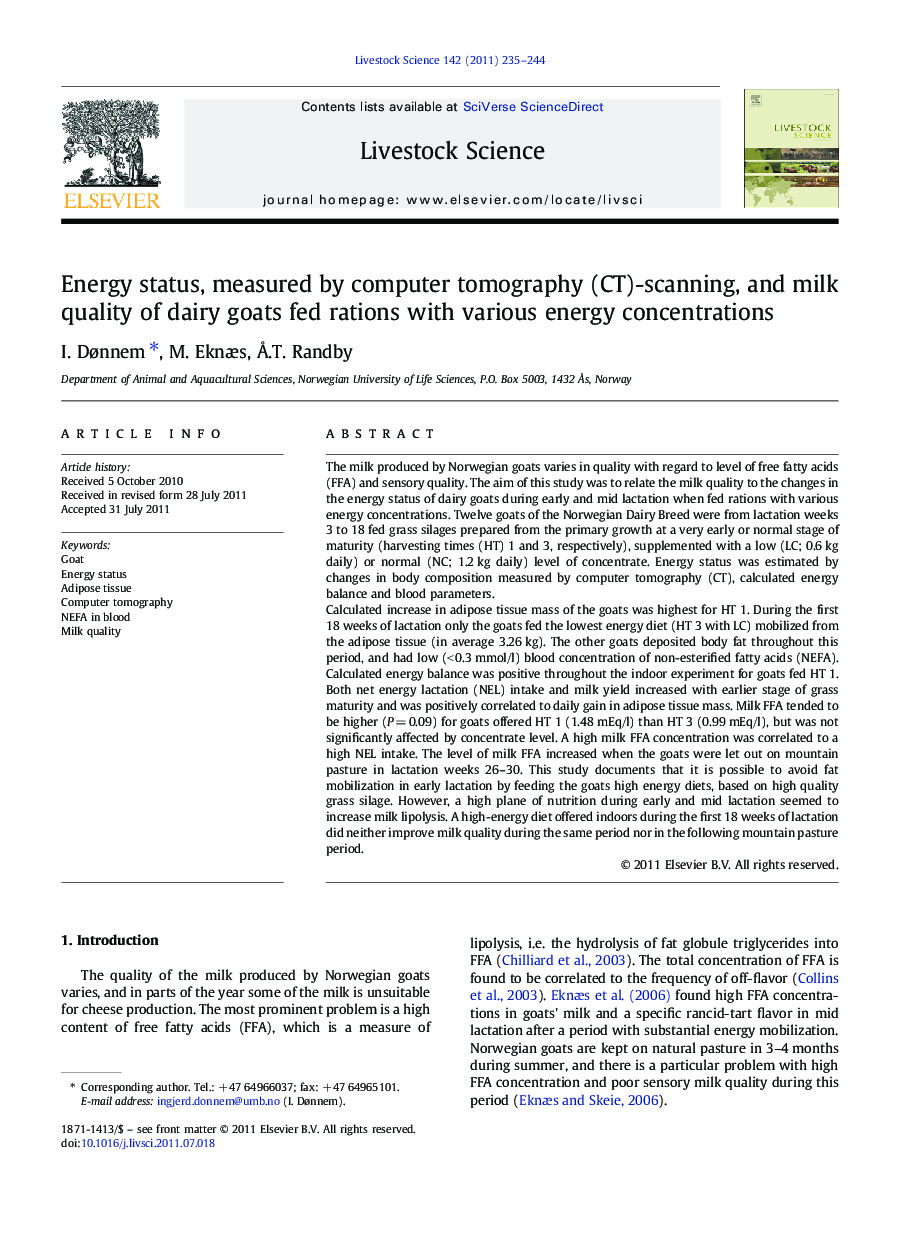| Article ID | Journal | Published Year | Pages | File Type |
|---|---|---|---|---|
| 5790770 | Livestock Science | 2011 | 10 Pages |
Abstract
Calculated increase in adipose tissue mass of the goats was highest for HT 1. During the first 18Â weeks of lactation only the goats fed the lowest energy diet (HT 3 with LC) mobilized from the adipose tissue (in average 3.26Â kg). The other goats deposited body fat throughout this period, and had low (<Â 0.3Â mmol/l) blood concentration of non-esterified fatty acids (NEFA). Calculated energy balance was positive throughout the indoor experiment for goats fed HT 1. Both net energy lactation (NEL) intake and milk yield increased with earlier stage of grass maturity and was positively correlated to daily gain in adipose tissue mass. Milk FFA tended to be higher (PÂ =Â 0.09) for goats offered HT 1 (1.48Â mEq/l) than HT 3 (0.99Â mEq/l), but was not significantly affected by concentrate level. A high milk FFA concentration was correlated to a high NEL intake. The level of milk FFA increased when the goats were let out on mountain pasture in lactation weeks 26-30. This study documents that it is possible to avoid fat mobilization in early lactation by feeding the goats high energy diets, based on high quality grass silage. However, a high plane of nutrition during early and mid lactation seemed to increase milk lipolysis. A high-energy diet offered indoors during the first 18Â weeks of lactation did neither improve milk quality during the same period nor in the following mountain pasture period.
Related Topics
Life Sciences
Agricultural and Biological Sciences
Animal Science and Zoology
Authors
I. Dønnem, M. Eknæs, Ã
.T. Randby,
